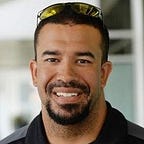MIMO in Fixed Wireless
One major featured used in LTE technology is the Multiple Input Multiple Output antenna system, referred to as MIMO. MIMO’s popularity is rapidly increasing especially in high rate data technologies to improve efficiency, not only in the commercial large networks but even in your house. It’s adoption is widespread in wireless from cellular technologies and also Wi-Fi.
MIMO works by using multiple antennas, up to 256 antennas in the larger applications, for both the transmitter and receivers to provide a path for data transmission rather than interfering with each other. MIMO allows for different set of data to be sent to and from different paths (antennas) compared to SISO, that is, Single Antenna Single Output. The receiver antenna passes the received data through mathematical algorithms designed for the best signal to noise ratio, in short, whatever antenna(s) can send and receive the data the best (fastest, clearest) is the antenna that is in operation.
MIMO Application in LTE
MIMO has been in use in fourth generation mobile networks also called LTE (Long Term Evolution) to achieve high data rates in downlink and uplink channels. The multiple antenna system is fitted into the mobile terminal and in the base station and also on the client side, although its challenging to fit a large number of antennas in smaller devices.
Benefits of MIMO in LTE
Mobile radio systems immensely benefit from MIMO technology. For instance, they are more reliable even in places where the signal is poor, there is interference or difficult structures to transmit through. They have a greater spectral efficiency which implies a better system capacity, allowing individual users to benefit from increased data rates.
MIMO allows for the use of other techniques like Space Time Block Coding (STBC) and Beamforming to achieve an extension of the cell coverage. Beamforming, although fundamentally a different technology is useful for the controlling and shaping the direction of the signals and takes advantage of the MIMO technology for implementation.
Due to the reception of data from multiple antennas, beamforming helps in the adding up of the signals constructively in order to enhance receivership.
Due to MIMO’s adoption in latest wireless applications such as LTE, LTE-Advanced, WLAN applications, and the now abandoned WIMAX, MIMI supports a huge amount of subscribers and is a now embedded technology in wireless applications.
What is the future of MIMO?
With the rolling out of 5G networks just around the corner, more and more firms and telecoms are deploying MIMO. It is estimated that by 2021, the mobile data traffic will be at an all-time high. Even with the current number of users, 4G networks experience the challenge of slow network speeds along with the limited power output particularly on terminal transmission distances.
MIMO has been faced with the challenge that one cannot be sure that the signals will be aligned in time and phase, as radio waves propagate its possible to have very slight differences in when the signal returns to the source. This “time shifting” is solved with dedicated processing power and computational algorithms as well as the application of beamforming.
As we see real world IoT applications and an increased number of internet users, it is only massive MIMO implementation that help keep up with the demand.
Gilbert A Darrell is the Founder of Horizon. He has 18 years experience in information technology and telecom solutions, a veteran in Fire and EMS Services, a crypto enthusiast and a member of the Bermuda Government’s Cryptocurrency Task Force.
Horizon Communications is an upcoming fixed wireless internet and cellular service provider looking to provide services in Bermuda, the Caribbean, and Central America before expanding internationally.
While utilizing 4th generation and soon 5th generation wireless technology, it will also heavily incorporate blockchain and cryptocurrency technology, one of the 1st ISP’s in the world to do so and the 1st to tokenize their services using an Initial Coin Offering (ICO).
More information can be found on their website — www.HorizonComm.co
